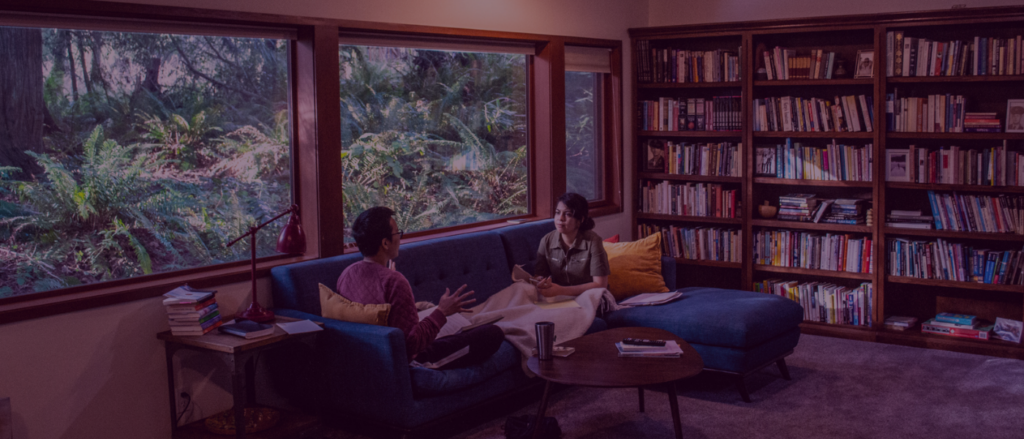Different types of writing residencies
At some point in time, you might find yourself researching writing residencies. Perhaps you’re looking for time, space, or (faraway) place to work on your writing or finish a project. Maybe you’d like some mentorship, or to be in fellowship and community with other writers. Finding the right residency can feel difficult, especially at first: while some offer both time and space, some cost (a lot of) money, especially for emerging writers.
In this resource, we first outline the different types of opportunities out there, with a few examples of each, including our favorite kinds: digital and DIY ones.
- A writing residency, often used interchangeably with artist residency, provides you with the time, space, and place to work on your writing. While all residencies have those three ingredients in common, most tout fellowship and community as a part of the goal and experience: to work alongside other artists and writers. But every residency is unique, from Vermont Studio Center to Banff Centre, Storyknife to Hedgebrook, Baldwin for the Arts to Fire Island Artist Residency. The differences often boil down to things like location (for ex., how remote it is), structure (for ex., self-guided vs. cohorts with mentors), and organization type (for ex., who and what type of business runs the program, which often translates into cost and scholarships).
- A writing retreat is often communal in nature, bringing together a cohort of writers for a specific period of time. They can be as short as three days, or as long as 30. For example, Roots, Words, and Wounds, “a sacred space wherein BIPOC stories are celebrated”; The Watering Hole, “a home for poets of color in the South;” Kimbilio, “empowering and sustaining fiction writers from the African diaspora”; or Iceland Writers Retreat, where Yrsa Daley-Ward will be the featured author for next year’s retreat. Writing retreats can happen at the same place or property each year, but they can also be one-off programs or rotate venues.
- A workshop can be many things (think: a room where others critique your work), but when said in the context of retreats and residencies, they are usually week-long, cohort-based programs—digital or in-person—where you’re working with a specific author of a specific genre. For example, you could check out Tin House Workshop Series in Portland, OR (note: they also have a residency program, too); Community of Writers near Lake Tahoe has two different weeklong workshops; and Clarion West have a range of workshops, from weekend to six-week summer ones; and Voices of our Nations Arts Foundation (VONA) have a variety of options, too.
- A writers/writing conference — and here, we’re not talking about the AWP’s of the world, but more intimate ones — are basically a writing retreat, residency, and workshop mashed up into one, as they often have cohorts of attendees, visiting mentors, workshop sessions, and more, like Sewanee in Tennessee, Breadloaf in Vermont, Key West Literary in Florida, or Aspen Summer Words in Colorado.
- Digital residencies have also emerged on the scene, taking the in-person format into a virtual experience that often spans several weeks or months. At Seventh Wave, we have a digital residency, Narrative Shifts, which is a seven-week, genre-agnost writing program that guides cohorts of 12-16 writers through seven sessions on specific topics of craft, story, and narrative. Digital residencies are often “intensives” or “immersive programs,” and can be a great precursor to an MFA program, or just a way to continue building community and momentum with your writing practice.
- When it comes to DIY retreats and residencies, there are plenty of ways to do it. For example, you could rent a house with a group of friends and have a schedule that everyone sticks to; book your own Postcard Cabin and unplug for 2-7 days; or, depending on where you live, you may also have access to places like Paragraph NY, which have their own kind of “residencies,” where they give you access to their writing rooms and desks, and so you could have a dedicated space to work on your writing that is in the city. You could also check out The Center for Fiction, which has workshops, but it also has similar awards and fellowships for access to their space. Note: you could also simply rent space at Paragraph or The Center for Fiction, if you have the resources to.
As you can see, there can be a lot to consider when you’re thinking about writing residencies, but on the flipside of that, there are more opportunities than ever out there, so take advantage of whatever experiences best align with your situation or circumstances.
Reasons to apply to a residency
In case you’re wondering why people apply to residencies, we’ve compiled a list of 23 reasons why people have participated in Narrative Shifts, our seven-week, genre-agnostic digital residency. While some of the reasons below are specific to our digital residency, we hope that some of these words and whys will help you find the right kind of space for you and your work this year.
- Community. “I don’t know any other way to make art but in community, and TSW is so clearly rooted in that same understanding.”
- Connection. “Since graduating and moving away a year ago, I’ve found it hard to find my own community of writers. This has made writing difficult for me because I thrive when reading others’ work and talking through our stories.”
- Mentorship. “I see a space for mentorship and guidance. I look forward to the group check-ins and the chance to share my progress within a nurturing and supportive environment.”
- Accessibility. “An MFA is not accessible to me at this point in my life, and the time commitment for this residency works perfectly for me and my family.”
- Session topics. “‘On Permission’ and ‘To Build A World’ will give me the tools to access the inevitable challenging stories and themes that will come up as I continue to research my family history, or create narratives around lineage, love, family relationships.”
- Focused time. “I’m eager to participate in a long-term program such as TSW so I can dedicate seven weeks to my artistic development and truly build relationships with other artists.”
- Creative flow. “I am particularly interested in TSW because it is a socially engaged space and I long for a break from more traditional academic or literary spaces so I can be in the mistake-friendly creative flow mode I know I produce best inside.”
- Practical tools. “I am excited at the opportunity to learn more about how to write cover letters, query letters, work with editors, maybe one day even put together a book proposal.”
- Engagement. “I want to know about the writing world I haven’t been exposed to before. I want to hear from the kinds of voices I might not encounter without this program.”
- Becoming. “This digital residency could be a bridge between where I am now — unmotivated and disconnected from my art and from other storytellers — and where I want to be: writing and drawing consistently, in community and making progress.”
- Belonging. “What I’m most looking for from this program is a greater sense of where my work and I belong in the context of this moment, which I expect will have a transformative effect on how I write, all on its own.”
- Transitions. “I see this program as a workshop of the artist themselves rather than what they are creating specifically. I think I really need that deep reflection and community space right now especially as I’ve transitioned out of my job and want to focus more on my artist practice.”
- Cohort Model. “TSW’s multi-genre cohort model is the environment I need.”
- Genre-agnostic. “The genre-agnostic framing of the residency helps get at the root of who an artist is and what they care about.”
- Supportive space. “I want to be in a non-competitive, collaborative space where I can check in about what’s coming through for me as a I create and that I can offer reciprocal support for.”
- Accountability. “I don’t currently have a strong writing community, and I want to build one. I do my best work with others.”
- Guided structure. “TSW’s thematic architecture and session prompts really attracted me to this program, as they provide an expansive space to explore form, medium and content that is still guided and porous.”
- Virtual format. “I appreciate the digital format because of financial and mobility constraints I have. Not having to budget for travel, accommodation and food is a relief.”
- Shared values. “I see something different in TSW, not only through the values it expresses but through the material offerings of its programs. I see enduring and sustainable ways to convene with other artist-mentors that truly allow us to nourish each other’s practices.”
- Creative relationships. “I’m excited by the concrete resources provided, the thoughtful facilitation, and the small cohorts gathered with an eye toward building a vast and lasting network of creative relationships.”
- Flexibility. “I feel like the structure and open-ended, generative nature of the program is perfect for where I am in my process. I have not been published, am very much in a generative phase, and eager to build a sustainable writing and researching practice.”
- Encouragement. “I hope to share my voice, perspective, and gratitude with other writers in a way that encourages them to keep writing after the residency ends.”
- Nourishing. “The residency’s mandate is attentive not just to the creative act directly, but the grounds on which that practice is grown, and evolves over time. This is a nourishing perspective for where I am situated in my own practice right now.”

A picture of Bianca Ng at our Rhinebeck Residency in upstate New York.



